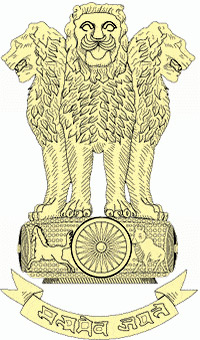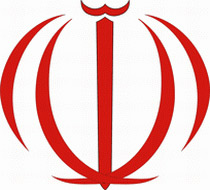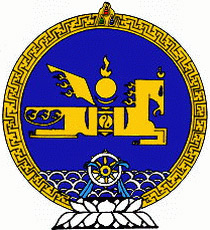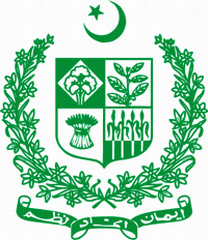Background
Factbook: SCO Observer States
(sectsco.org)
Updated: 2010-06-09 15:28
 |
Large Medium Small |
The four observer states of the Shanghai Cooperation Organization (SCO) are Mongolia, India, Pakistan and Iran. The following are some basic facts about the observer states.
India
The Republic of India is a country in South Asia, with a population of more than one billion. It is the second most populous country in the world and occupies the major portion of the Indian subcontinent. The capital is New Delhi.

The Constitution of India came into force on January 26, 1950, almost three years after it gained independence from British rule on 15 August 1947. It proclaims fundamental rights of all citizens irrespective of their race and religion, opinion and sex. It also proclaims freedom of speech, religious freedom, freedom of assembly, freedom of movement and travel, freedom of property acquisition and freedom of occupation or profession.
The President of India is the head of state, elected indirectly by an electoral college for a five-year term. The Prime Minister is the head of government and exercises most executive powers. Appointed by the President, the Prime Minister is by convention supported by the party or political alliance holding the majority of seats in the lower house of Parliament. The executive branch consists of the President, Vice-President, and the Council of Ministers headed by the Prime Minister.
The Legislature of India is a bicameral Parliament, which consists of the upper house called the Rajya Sabha (Council of States) and the lower house called the Lok Sabha (House of People).
India has a unitary three-tier judiciary, consisting of the Supreme Court, headed by the Chief Justice of India, 21 High Courts, and a large number of trial courts.
The main political parties include Indian National Congress (INC), Bharatiya Janata Party (Indian People's Party, BJP), Communist Party of India (Marxist), Samajvadi Party, Janata Dal (unified) and many others.
India is the seventh largest country by geographical area, covering 329 million sq km. It shares borders with Pakistan in the west, with China, Nepal and Bhutan in the northeast, with Bangladesh and Myanma in the east. Besides, India has sea borders with Maldives in the southwest, with Sri Lanka in the south and with Indonesia in the southeast. The disputable territory of State Jammu and Kashmir shares its border with Afghanistan.
India is a native land to many ancient civilizations and a crossing point of important historical trading routes. Hinduism, Buddhism, Sikhism and Jainism originated from India.
India consists of 28 states (that in turn are divided into districts), six union territories and National Capital Territory of Delhi. Each state has its own elected government while the union territories are governed by the administrators appointed by the central government. However, several union territories have their own elected governments.
Iran
Iran or the Islamic Republic of Iran is a Central Asian country. It is the 18-th largest country in the world in terms of area, covering 1,648,000 sq km and with a population of over 70 million. The capital is Teheran.
Iran shares borders with Azerbaijan, Armenia and Turkey in the northwest, with Iraq in the west, with Turkmenistan in the north, and with Afghanistan and Pakistan in the east. Iran borders the Caspian Sea in the north and the Persian Gulf in the south.

Iran is home to one of the world's oldest continuous major civilizations, with historical and urban settlements dating back to 7,000 BC. The majority of the population speaks the Persian language, which is also the official language of the country, as well as other Iranian languages or dialects.
According to the Constitution adopted in 1979, Iran is an Islamic republic. Its highest authority is the Supreme Leader of Iran, who is responsible for delineation and supervision of the general policies of the Islamic Republic of Iran. The Supreme Leader is Commander-in-Chief of the armed forces, controls the military intelligence and security operations; and has sole power to declare war or peace.
The second in rank leading official of Iran is the President of the Islamic Republic of Iran(currently Mahmud Ahmadinejad). The President is the guarantor of the Constitution and the highest state authority and is elected directly every four years. The president can only be re-elected for one term. Presidential candidates must be approved by the Council of Guardians prior to running in order to ensure their allegiance to the ideals of the Islamic revolution. The President is responsible for the implementation of the Constitution and for the exercise of executive powers, except for matters directly related to the Supreme Leader, who has the final say in all matters. The President appoints and supervises the Council of Ministers, coordinates government decisions, and selects government policies to be placed before the legislature.
As of 2008, the Legislature of Iran (also known as the Majlis of Iran) is a unicameral body. Before the Iranian Revolution, the legislature was bicameral, but the upper house was removed under the new constitution.
The Supreme Leader appoints the head of Iran's Judiciary, who in turn appoints the head of the Supreme Court and the chief public prosecutor. There are public courts that deal with civil and criminal cases, and "revolutionary courts" which deal with certain offenses, including crimes against national security.
Iran is an agrarian-industrial country with a developed petroleum industry. The country produces crude oil, coal, gas, copper, iron, Mg and Pb/Zn ores. Iran is a well-known producer of carpets and metalware. The major agricultural produces include wheat, barley, rice, beans, cotton, sugar-beet, sugar cane, tobacco, tea and nuts.
Iran ranks second in the world in natural gas reserves and also second in oil reserves. It is the Organization of the Petroleum Exporting Countries' (OPEC) second largest oil exporter.
Mongolia
Mongolia is in central Asia and covers 1,564,100 sq km. It is the world's nineteenth-largest country with a population of more than two and a half million. It shares a 3,485 km border with Russia to the north and a 4,677 km border with China to the south. From west to east, the country is 2,392 km; from north to south it is 1,259km. The average altitude is 1,580 meters above sea-level, and Mongolia is a landlocked country. The capital of Mongolia is Ulan Bator.

The head of state is the President of the Republic of Mongolia (currently Nambaryn Enkhbayar), elected by the direct national election every four years. The President cannot be re-elected after two successive terms.The President is also the Commander-in-Chief of Armed Forces of the country.
Mongolia is a parliamentary republic. The current Constitution of Mongolia was adopted on January 13, 1992, and went into effect on February 12, 1992. The parliament is elected by the people and in turn elects the government. Mongolia's constitution guarantees full freedom of expression, religion, and others. Mongolia has a number of political parties, the biggest ones being the Mongolian People's Revolutionary Party (MPRP) and the Democratic Party (DP).
Mongolia consists of 21 aimags (provinces), which are in turn divided into 315 sums (districts). The capital Ulan Bator is administrated separately as a khot (municipality) with provincial status.
The official language of Mongolia is Khalkha Mongolian, which uses the Cyrillic alphabet, and is spoken by 90 percent of the population. A variety of different dialects are spoken across the country. In the west the Kazakh and Tuvan languages, among others, are also spoken. The Russian language is the most frequently spoken foreign language in Mongolia, followed by English.
Mongolia's economy is centered on agriculture and mining. Mongolia has rich mineral resources, and copper, coal, molybdenum, tin, tungsten, and gold account for a large part of industrial production.
Industry currently accounts for 21.4 percent of GDP, approximately equal to the weight of the agriculture sector (20.4 percent). These industries include construction materials, mining (coal, copper, molybdenum, fluorspar, tin, tungsten, and gold), oil, food and beverages, processing of animal products, and cashmere and natural fiber manufacturing.
Pakistan
Pakistan or the Islamic Republic of Pakistan is a country in South Asia, covering an area of more than 800,000 sq km. Its capital is Islamabad.
It has a coastline along the Arabian sea, and is bordered by Afghanistan in the northwest, by Iran in the southwest, by China in the north and by India in the east.

Pakistan is a federation of 4 provinces (Punjab, Sindh, North-West Frontier Province and Belochistan) and a capital territory and federally administered tribal areas.
Pakistan is a semi-presidential federal democratic republic with Islam as the state religion. It has a bicameral legislature comprising a 100-member Senate and a 342-member National Assembly. The President is the Head of State (currently Asif Ali Zardari) and the Commander in Chief of the Armed Forces and is elected by an electoral college. The prime minister is usually the leader of the largest party in the National Assembly. Each province has a similar system of government with a directly elected Provincial Assembly in which the leader of the largest party or alliance becomes Chief Minister. Provincial Governors are appointed by the President.
The estimated population of Pakistan is 172,800,000, making it the world's sixth most populous country, behind Brazil and ahead of Russia. By the year 2020, the country's population is expected to reach 208 million, owing to a relatively high growth rate.
Pakistan is a multilingual country with more than 60 languages being spoken. English is the official language of Pakistan and used in official business, government, and legal contacts, while Urdu is the national language.
The structure of the Pakistani economy has changed from a mainly agricultural base to a strong service base. According to government figures, agriculture now only accounts for roughly 20 percent of the GDP, while the service sector accounts for 53 percent of the GDP. Significant foreign investments have been made in several areas including telecommunications, real estate and energy. Other important industries include textiles (accounts almost 60 percent of total GDP), food processing, chemicals manufacture, and the iron and steel industries.